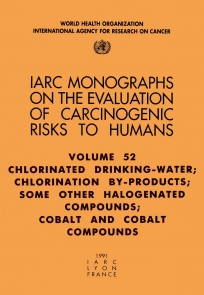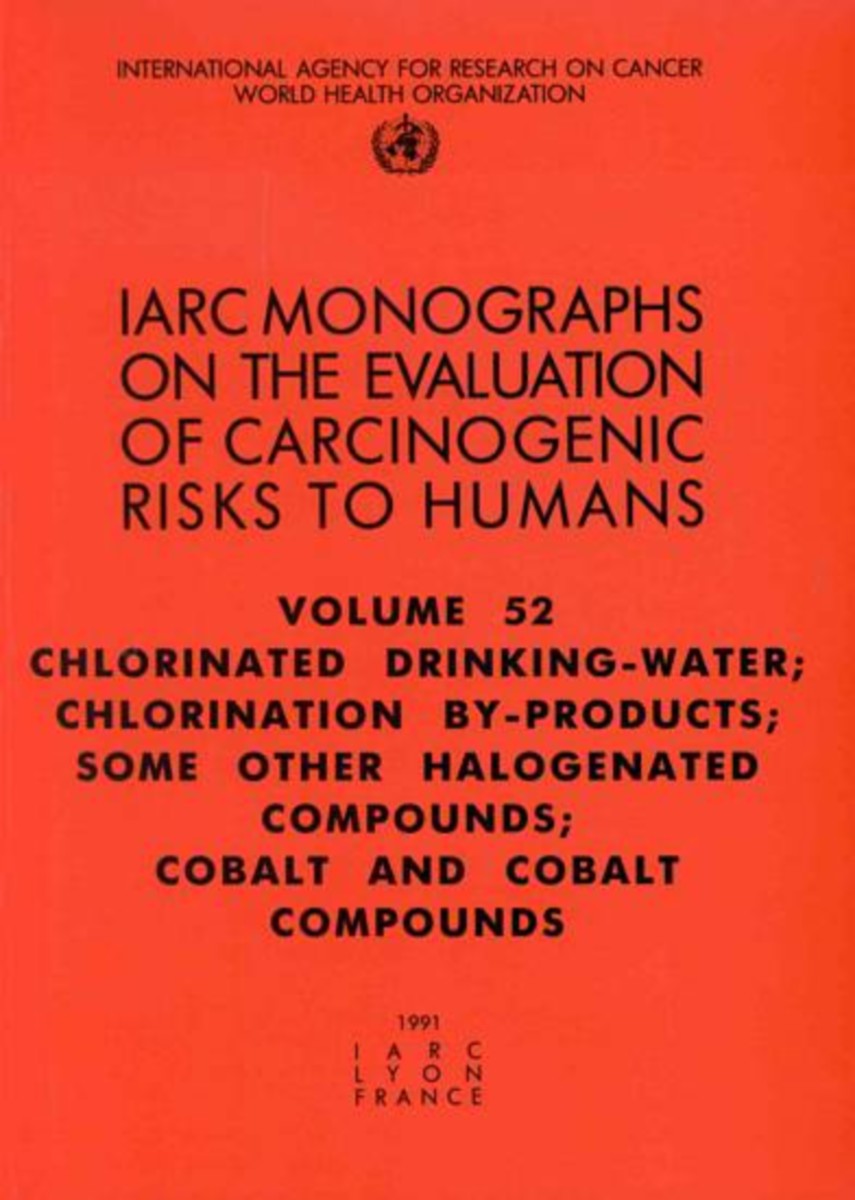This OH is a. The Occupational Safety and Health Administration OSHA promulgated its permissible exposure limits PEL of 1 milligram per cubic meter of air mgm 3 for chlorodiphenyl products containing 42 chlorine and 05 mgm 3 for chlorodiphenyl products containing 54 chlorine determined as 8-hour time-weighted average TWA concentrations 35 based on the 1968 Threshold Limit Values TLVs of the.

Iarc Publications Website Chlorinated Drinking Water Chlorination By Products Some Other Halogenated Compounds Cobalt And Cobalt Compounds
Chlorine gas is the least expensive form of chlorine to use.

Halogenated carcinogens chlorine. Dioxin can get into drinking water from. Halogenated hydrocarbons also known as halocarbons are hydrocarbon compounds in which at least one hydrogen atom is replaced by a halogen Group VII A of the Periodic Table atom such as fluorine chlorine or bromineCommon examples of halogenated hydrocarbons include. Inhalation studies with both humans and rats have shown that dichloropropene DCP is readily absorbed conjugated with glutathione via glutathione S-transferase GST and rapidly excreted in the urine as N-acetyl-S-cis-3-chloroprop-2-enyl-cysteine 3CNAC a mercapturic acid metabolite.
As well as the halogenated product. HFRs are persistent bioaccumulative toxins meaning that they accumulate in organisms and the broader environment often reaching alarmingly high concentrations as they travel up the food chain. INPUT CAPACITY NO X EMISSION LIMIT gGJ AND PPM AT 3 O 2 105 TO 105 GJh 10 TO 100 MILLION Btuh.
Halogenated Fire Retardants HFRs are a broad class of flame retardants containing chlorine or bromine that have aroused concern due to their exponential accumulation in human beings in recent years. Chlorine bleaching of pulp and paper and other industrial processes can create small quantities of dioxins in the environment. Carcinogens summary report on the evaluation of short-term in vivo tests EHC 109 1990 Chlordane EHC 34 1984 Chlordecone EHC 43 1984 Chlordimeform EHC 199 1998 Chlorendic acid and anhydride EHC 185 1996 Chlorinated Paraffins EHC 181 1996 Chlorine and hydrogen chloride EHC 21 1982 Chloroalkyl ethers selected EHC 201 1998 Chlorobenzenes other than hexachlorobenzene.
No information is available on the carcinogenic effects of chlorine in humans from inhalation. Rotation around this carbon-carbon bond is possible and does not result in different isomer conformations. Note also that each carbon involved in the double bond is also attached to two different atoms a hydrogen and a chlorine.
A study of six male volunteers exposed at 1 ppm commercial Telone II 506 cis-isomer 452 trans. Several halogenated products derived from methane and ethane CH 3 CH 3 are listed in Table 76 along with some of their uses. Some attention is given to an examination of the potential health effects related to the use of these adsorbents but detailed toxicological.
1-bromopropane C 3 H 7 Br methylene chloride CH 2 Cl 2 chloroform CHCl 3 tetrachloroethylene C 2 Cl 4 and. Many bleaches have broad spectrum bactericidal properties making them useful for. Purchase Encyclopedia of Toxicology - 3rd Edition.
CCME NO x Emission Guidelines for New Boilers and Heaters. In the lower diagram the halogenated alkene has restricted rotation around the double bond. Chronic long-term exposure to chlorine gas in workers has resulted in respiratory effects including eye and throat irritation and airflow obstruction.
Appendix IV to Part 268 Wastes Excluded From Lab Packs Under the Alternative Treatment Standards of 26842c Appendix V to Part 268 Reserved Appendix VI to Part 268 Recommended Technologies To Achieve Deactivation of Characteristics in Section 26842. Deposition from air to. Chlorine is a commonly used household cleaner and disinfectant.
Haloalkanes behave as the R synthon and readily react with nucleophiles. List of Halogenated Organic Compounds Regulated Under 26832. Hydrolysis a reaction in which water breaks a bond is a good example of the nucleophilic nature of haloalkanes.
Print Book E-Book. If the chlorine liquid is released from its container it will quickly return back to its gas state. In the upper figure the halogenated alkane is shown.
Chlorine is a potent irritant to the eyes the upper respiratory tract and lungs. This chapter contains the findings of the Subcommittee on Adsorption of the National Research Councils Safe Drinking Water Committee which studied the efficacy of granular activated carbon GAC and related adsorbents in the treatment of drinking water. The typical amount of chlorine gas required for water.
Chlorine gas is sold as a compressed liquid which is amber in color. Cigarette smoke also contains small amounts of dioxins. For example methane CH 4 can react with chlorine Cl 2 replacing one two three or all four hydrogen atoms with Cl atoms.
The polar bond attracts a hydroxide ion OH NaOH aq being a common source of this ion. Appendix VII to Part 268 LDR Effective Dates of Surface Disposed. It often refers specifically to a dilute solution of sodium hypochlorite also called liquid bleach.
Chlorine as a liquid is heavier more dense than water. Compounds in fuel or combustion air containing halogens chlorine fluorine bromine and iodine Potential carcinogens global warming. Potential carcinogens Halogenated compounds.
Air emissions from waste incineration and other combustion with subsequent deposition to lakes and reservoirs. As a result of their extensive use and persistence PCBs remain ubiquitous environmental contaminants. Up to 24 000 Table 3.
Only haloalkanes that contain chlorine bromine. PCBs were used in cutting oils lubricants and as electrical insulators. Bleach is the generic name for any chemical product that is used industrially and domestically to remove color from a fabric or fiber or to clean or to remove stains in a process called bleaching.
PCBs are a class of synthetic persistent lipophilic halogenated aromatic compounds that were widely used in industrial and consumer products for decades before their production was banned in the late 1970s.